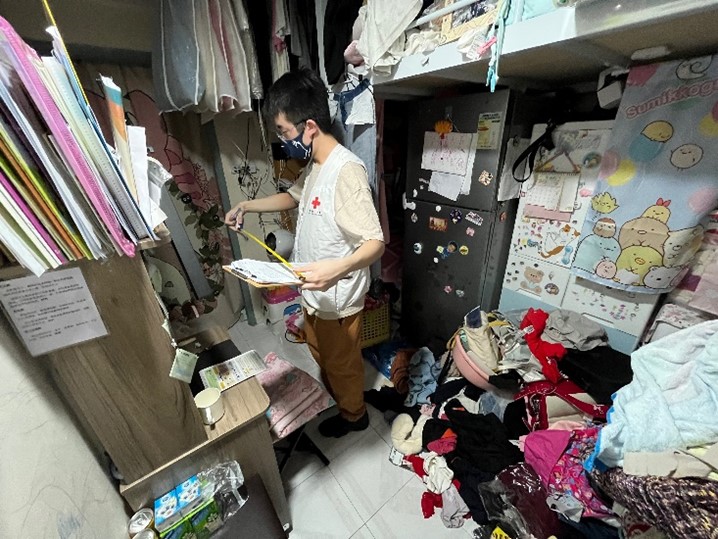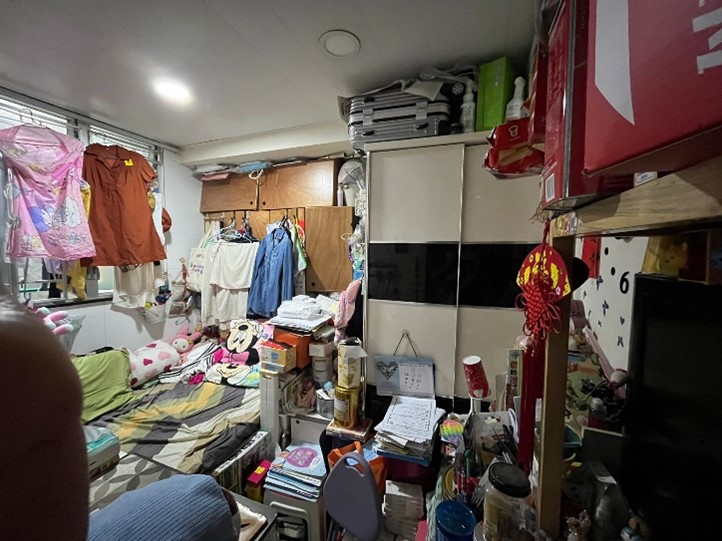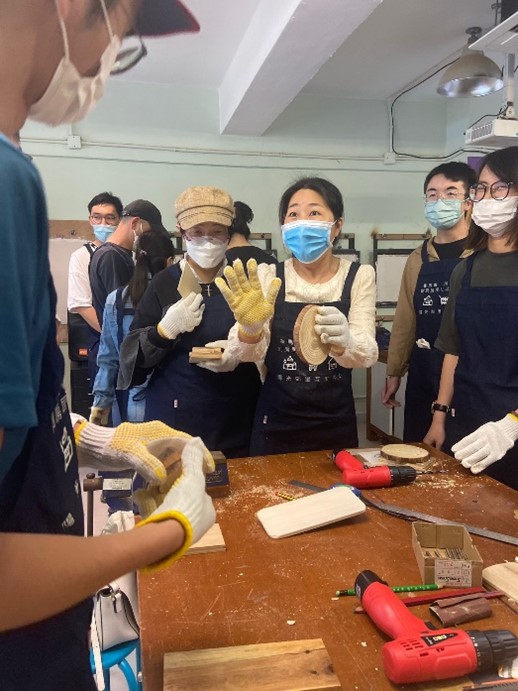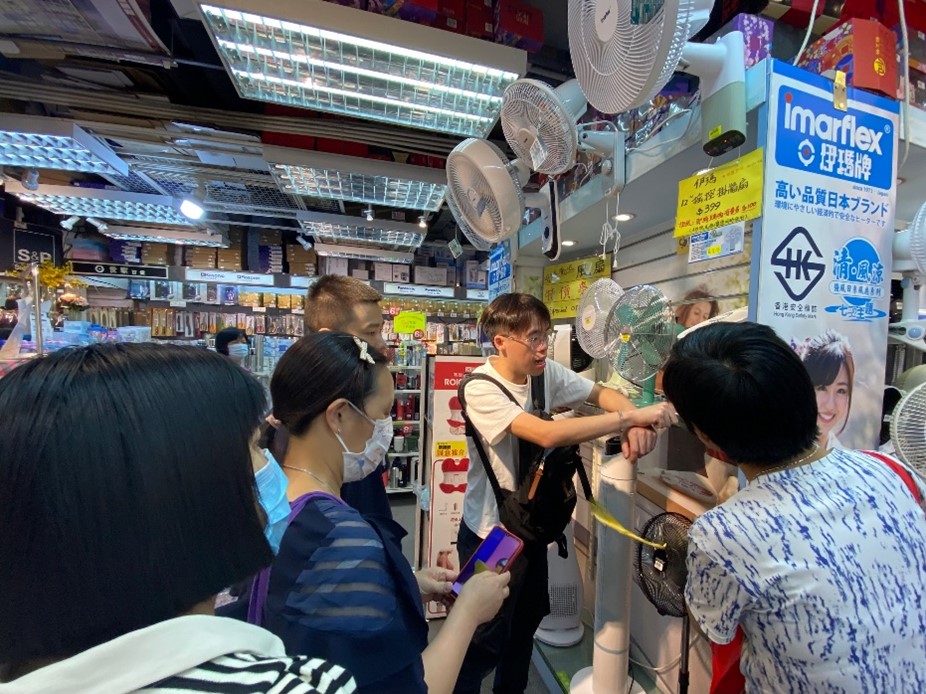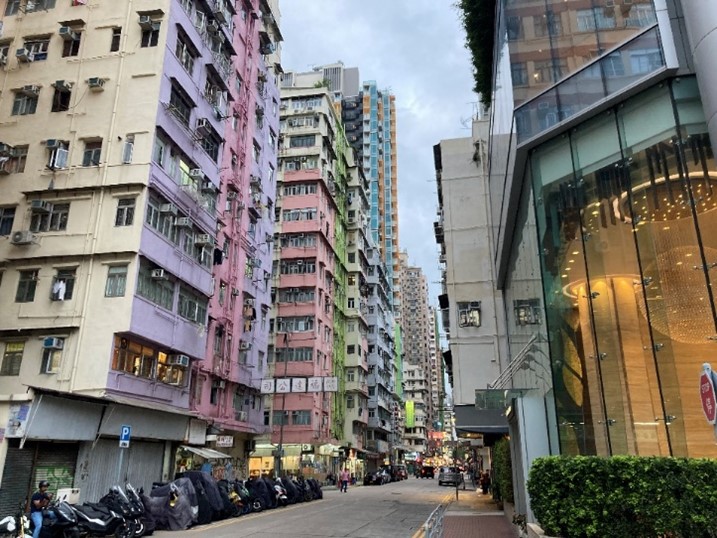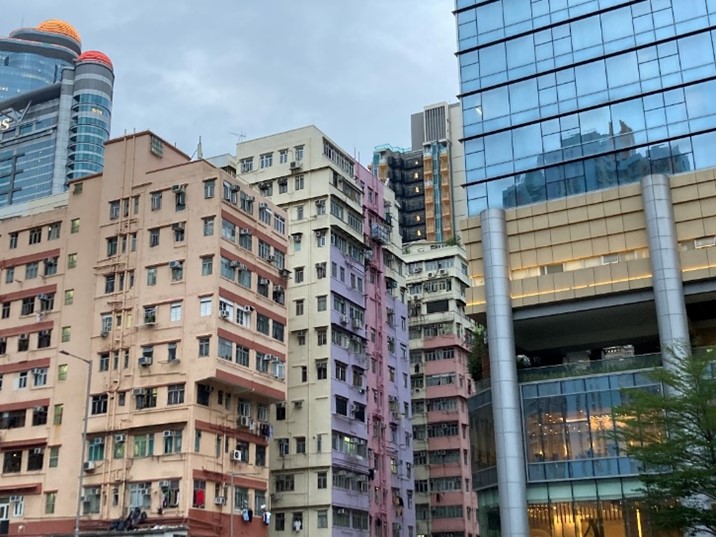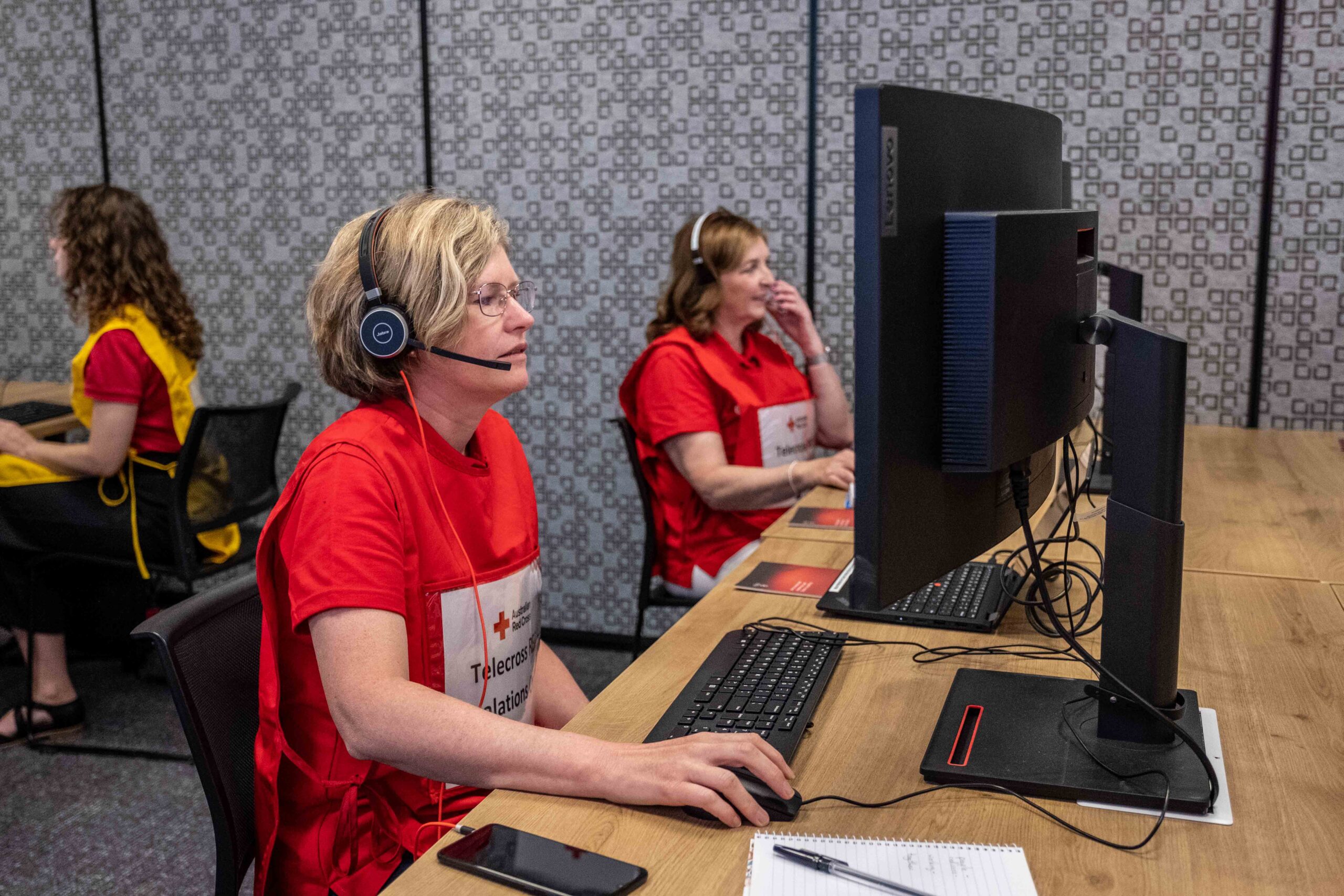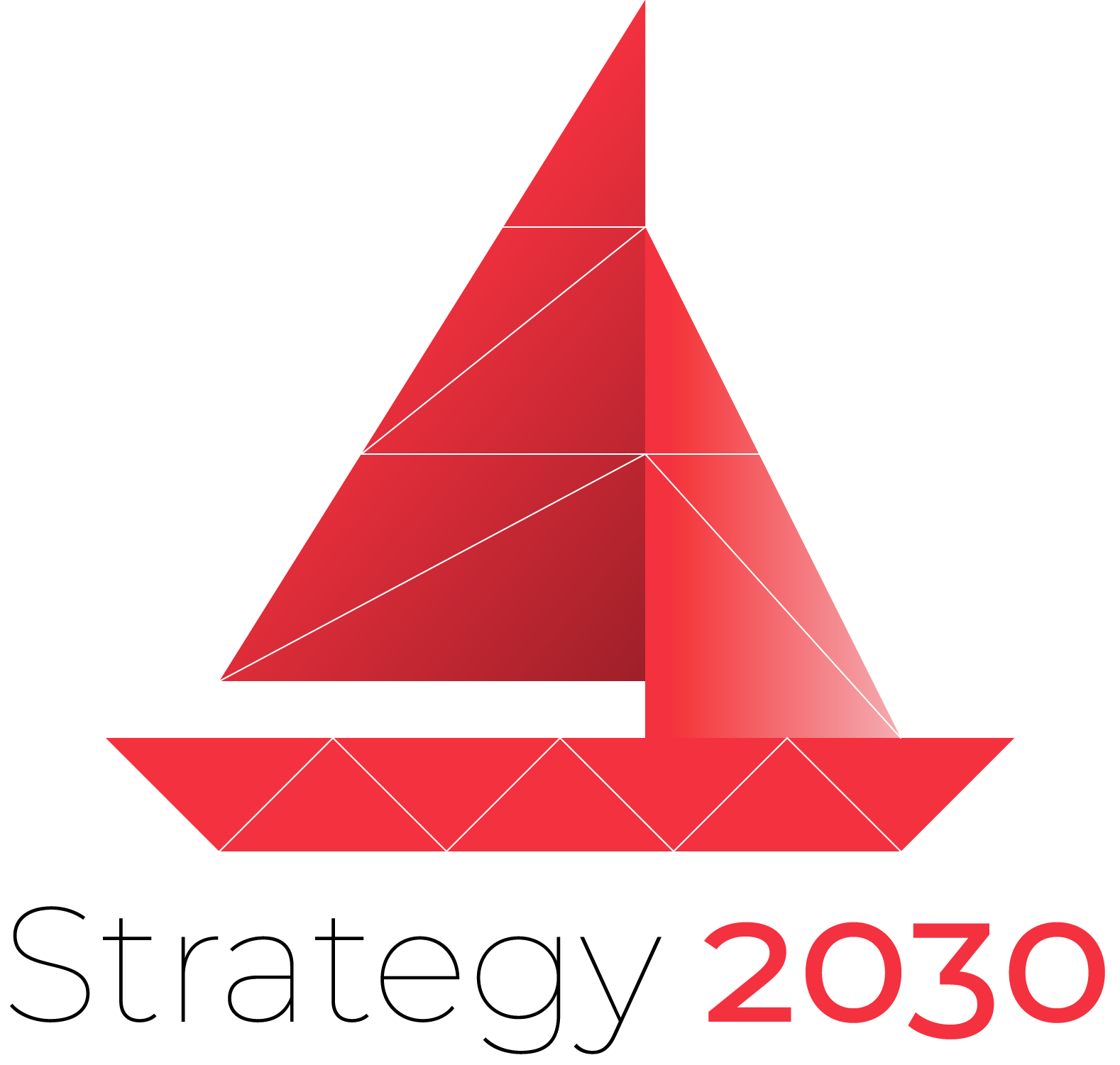Collaborative Partnership – Services Providers and Service Users
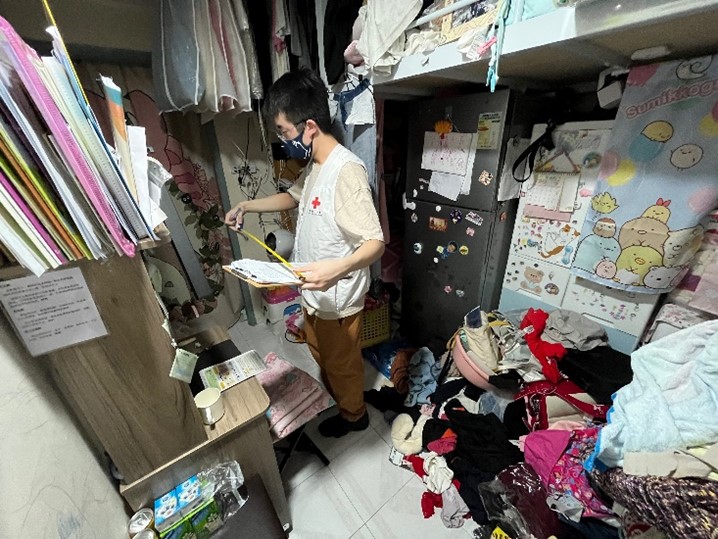
This story was prepared and submitted by the Hong Kong Red Cross, Branch of Red Cross Society of China.
Sub-divided units (SDUs), one of the “special” residential housing types in Hong Kong, generally refer to the subdivision of a flat as shown on the original approved plan of a building into two or more individual rooms. Due to the modification of flat, tiny spaces, fire safety, building structure, environmental hygiene, lighting and ventilation are common problems that existed in SDUs. Due to the housing shortage in Hong Kong, over 215,700 persons are living in SDUs even it is categorized as informal settlements [1]. In view of the people living in SDU have great needs, engaging SDU tenants is one of the key initiatives to enhance community resilience.
Dividing a flat even more dire at 6.6 m2 for those residing in SDU.
Actively collaborate with service users in community engagement works
Community engagement work requires building strong partnerships with the service users we aim to serve. This means working closely with SDU tenants and community stakeholders to understand their needs, priorities and perspectives. A collaborative partnership approach helps ensure that any initiatives or programmes developed are relevant, meaningful and impactful for the target community.
By co-creating programmes with SDU tenants, we could enhance their self-efficacy and enhance their resilience to face life challenges. We encourage SDU tenants actively involve as partners and collaborators, rather than just as recipients of services. They have a voice in decision making and be empowered to carry out the community works that are meant to benefit them.
To ensure the programmes benefit SDU tenants, need assessment through participatory approaches is re quired at the beginning. We designed a questionnaire concerning their interests and needs and took account of their feedback in order to organise a series of relevant workshops and activities. Those workshops and activities usually partnered with a local community organization to ensure sticking into the community.
We also intended to involve our service users in the whole project process. During the planning phase, SDU tenants were invited as a tutor to deliver those workshops and activities. It was somehow an empowerment process in building confidence and recognition. SDU tenants and programme workers discussed how to hold the workshops, produce briefings and de-debriefings together, and what materials should be prepared. For example, we organised wood upcycling workshops where the participants could learn how to upcycle wasted wood into useful products. It was delighted that the tutors and participants have lots of interactions as they shared their eco-friendly tips and challenges. We believe that through the process of co-creating programmes, self-efficacy can be gained, and it is effective to enhance their willingness and motivation to engage in the community.
Taking up the challenges of scattered subdivided flats and residents' busy schedule
When carrying out community engagement work in a mega city like Hong Kong, it is rather an uphill battle only locating the community and its members as a visible geographical boundary never exists. As mentioned, SDUs are spread across most of the territory, blooming in thousands of residential buildings from affluent neighbourhoods like Wai Chi to industrial area in Kwai Chung. Due to the lack of local district service spots and community service experiences, we found it hard to be in touch with the service users on our own. Instead of knocking door-by-door, we targeted four major areas where SDUs were densely located and started reaching out to local community organizations. We had built up connections with a good number of SDU tenants with our partners' sound knowledge and deep connection within the area.
Many sub-divided units (SDU) are located in the city center which cost very high rental. It reflects the economy disparity in Hong Kong.
However, only gathering the service users is not enough. Our focus shifted to creating an inclusive communal space beyond geographical boundaries while meeting their already overwhelmed schedule. It did not take long for us to realise that many SDU tenants are full-time working parents, bearing both the weight of parenting and working. Traveling and meeting other community members in person was just too much of a luxury for them. Time can be packed even for kids, as homework and extra-curricular activities occupy most of their time.
Despite their busy schedule, our service users also lack a sense of belonging to the community. A hybrid approach was taken to offer flexibility to them on how to interact with each other, as they could know each other online or in person. We formed different online chat groups with our service users' consent to foster interactions. The chat groups were platforms for them to share community information and resources. The workshops and activities we held in different locations allowed them to meet in person. They got the chance to build relationships with whom share similar backgrounds through interactive and collaborative activities, reminding them of the importance of mutual help and support in the neighbourhood. These are the learning we gained from the community engagement, with service users that are situated in different areas of the city.
Reference:
[1] HKSAR Census and Statistics Department. (2023). (rep.). Thematic Report: Persons Living in Subdivided Units. Retrieved July 7, 2023, (P.5) from https://www.censtatd.gov.hk/en/data/stat_report/product/B1120113/att/B11201132021XXXXB0100.pdf.

